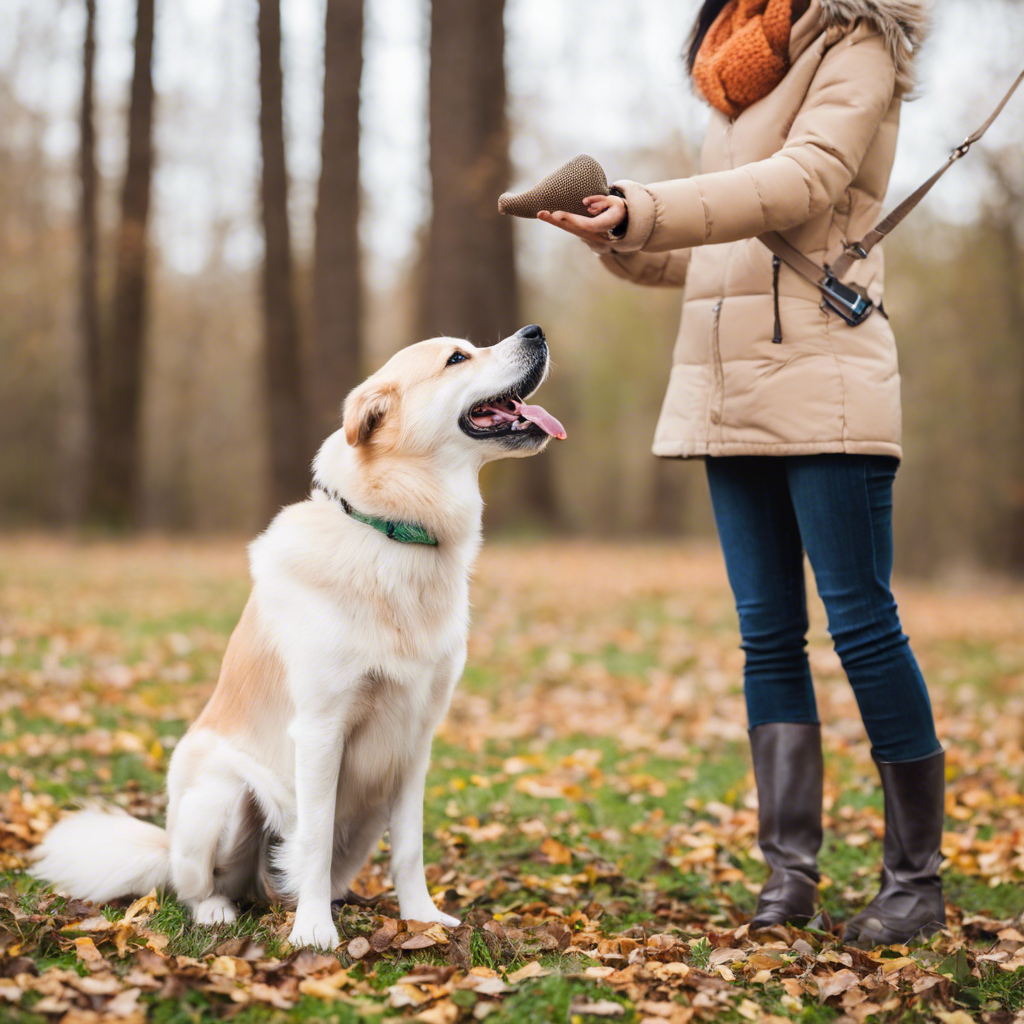# Using Food Rewards in Dog Training: A Tasty Approach to Teaching Your Furry Friend
As a dog owner, you’ve likely heard the saying, “the way to a dog’s heart is through their stomach.” While this may be a playful take on a popular adage, there’s some truth to the idea that food can be a powerful motivator when it comes to training your canine companion. Using food rewards effectively in dog training is an art that can transform your training sessions into fun, engaging experiences for both you and your furry friend.
## The Power of Food Rewards
Food rewards, also known as treats, are a popular tool in positive reinforcement training. This training approach focuses on rewarding desired behaviors to encourage their repetition. When you give your dog a treat for sitting on command, for instance, you’re essentially telling them, “Great job! That’s exactly what I wanted you to do, and here’s a delicious reward for your effort.”
## Instant Gratification, Instant Learning
One of the reasons food rewards work so well is the immediate gratification they provide. Dogs live in the moment, and they respond best to immediate consequences. The treat becomes a powerful motivator because it is a direct and instant reward for a job well done. Imagine trying to teach your dog a new trick and only rewarding them after a few days. The delayed gratification would likely confuse your dog, making the learning process more challenging.
## Creating a Positive Association
Food rewards not only provide immediate feedback but also create a positive association with the desired behavior. When your dog performs a task correctly and receives a tasty treat, they’ll start to associate that behavior with something enjoyable. Over time, this positive association can lead to your dog eagerly performing the desired action, even without the constant presence of a food reward. This is the foundation of building good habits in your dog’s behavior.
## Choosing the Right Treats
Not all treats are created equal, and the effectiveness of food rewards lies in selecting the right ones. The ideal treats for training are small, soft, and highly flavorful. You want treats that your dog can consume quickly without losing focus on the task at hand. Hard or large treats can distract your dog, causing them to lose interest in the training session.
Consider using treats specifically designed for training purposes, such as bite-sized, meaty morsels or soft, chewy snacks. Some dog owners even prefer to use their dog’s regular kibble as rewards, especially if it’s a high-quality, nutritious brand that their dog loves. This can be a cost-effective option, but it may not be as motivating as a special treat.
## Timing is Everything
The timing of your food rewards is critical to the success of your training. You should deliver the treat within seconds of your dog performing the desired behavior. This immediate response helps your dog understand the connection between their action and the reward. If you wait too long, your dog might associate the treat with a different behavior or even a random action, which can lead to confusion and inconsistency in their training.
## Pairing with Verbal Praise
While food rewards are powerful, it’s beneficial to pair them with verbal praise to create a well-rounded training strategy. After your dog performs the desired behavior and receives a treat, follow up with enthusiastic verbal praise, such as “Good boy/girl!” or “Yes! That’s awesome!” This combination of food and praise reinforces the positive association and encourages your dog to continue performing the desired action.
## Gradually Reducing Treats
The ultimate goal of using food rewards is to establish good behavior and eventually phase out the treats. As your dog becomes more reliable in performing commands or tricks, you can start to intermittently replace food rewards with verbal praise or physical affection. This process, known as intermittent reinforcement, helps maintain the behavior over time.
For example, if your dog consistently sits on command, you can reward with a treat every second or third time, and use verbal praise for the other instances. This way, your dog never knows when the treat will come, keeping them engaged and motivated.
## Avoiding Common Pitfalls
Using food rewards effectively requires some caution to avoid common pitfalls. One such pitfall is overfeeding, which can lead to weight gain and health issues. To prevent this, choose low-calorie treats or break them into smaller pieces. Additionally, be mindful of the overall treat consumption during training sessions and adjust your dog’s regular meals accordingly.
Another potential issue is creating a treat-dependent dog who only performs when they see a treat. To avoid this, vary your rewards and gradually transition to intermittent reinforcement, as mentioned earlier.
## Real-Life Success Stories
Numerous dog owners have had remarkable success stories using food rewards in their training routines. For instance, Sarah, a proud dog mom to a Border Collie named Ace, shared her experience:
> “Ace was a quick learner, but he initially struggled with staying focused during training sessions. I started using small, soft treats as rewards, and it made a world of difference. He would sit, stay, and roll over with excitement whenever he heard the treat bag open. Over time, I reduced the treats and transitioned to verbal praise and the occasional treat, and he still performs like a pro!”
## A Delicious Recipe for Training Success
Using food rewards effectively in dog training is an art that requires patience, consistency, and a deep understanding of your dog’s preferences. By choosing the right treats, timing the rewards perfectly, and gradually reducing their frequency, you can transform your dog’s behavior and create a strong bond between you and your furry friend.
So, grab some tasty treats, get creative with your training sessions, and watch as your dog’s behavior becomes a masterpiece of obedience and joy. Happy training!

